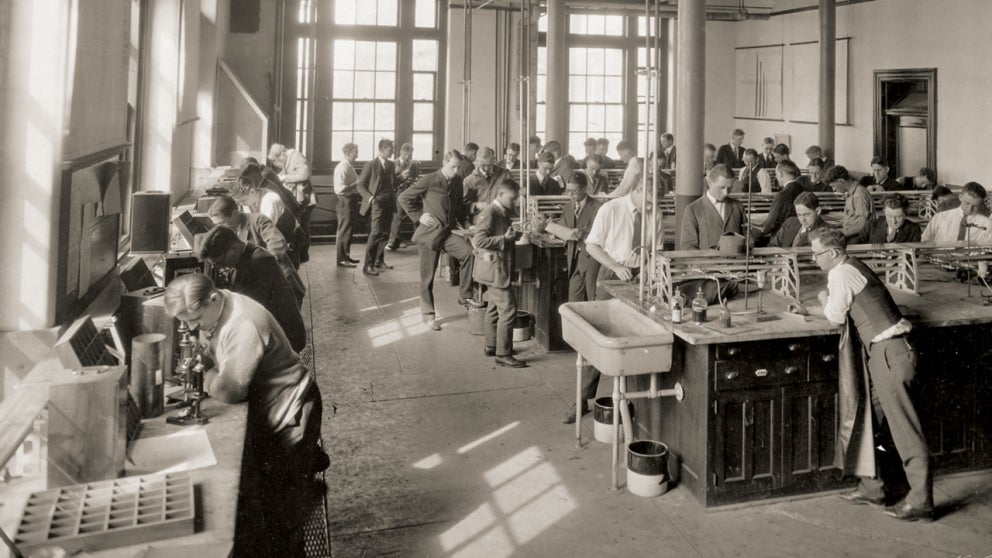
The Evolution of the Rensselaer Laboratory

The Rensselaer School opened in 1824 in a single building known as the Old Bank Place, the birthplace of the Rensselaer laboratory, which quickly became an important space for students. In fact, one of the distinctive characteristics of the school during these early years was a focus on the practical application of knowledge in the form of experiments.
As the student body grew (30 students in 1827 to 426 in 1905), so did the size of the Institute, which placed a strain on facilities. Additional laboratories were needed for growing, moving, and, therefore, expanding the curriculum.
In 1907, the Walker Laboratory was built with five large laboratories for various specialties. Due to a growing chemical engineering student population, the building’s size was doubled in 1921.
In 1909, Russell Sage Laboratory opened its doors, housing several laboratories — a steam laboratory, a hydraulic laboratory, an internal combustion engine and refrigeration laboratory, a dynamo laboratory, and an electro chemical laboratory.
In 1962, the Materials Research Center (MRC) was constructed under the first facilities grant awarded by NASA and included 25 laboratories designed for powder metallurgy, polymer, ceramics, ultrasonics, cryogenics, corrosion, and other materials research.
In 2004, Rensselaer took center stage with the opening of the Center for Biotechnology and Interdisciplinary Studies, a state-of-the-art research facility at the center of fundamental and translational research dedicated to improving global health as well as water, energy, and the environment.
While the Rensselaer School began with few dedicated research facilities, today the Rensselaer campus is home to 32 research centers and 746 labs, studios, and technology spaces.















